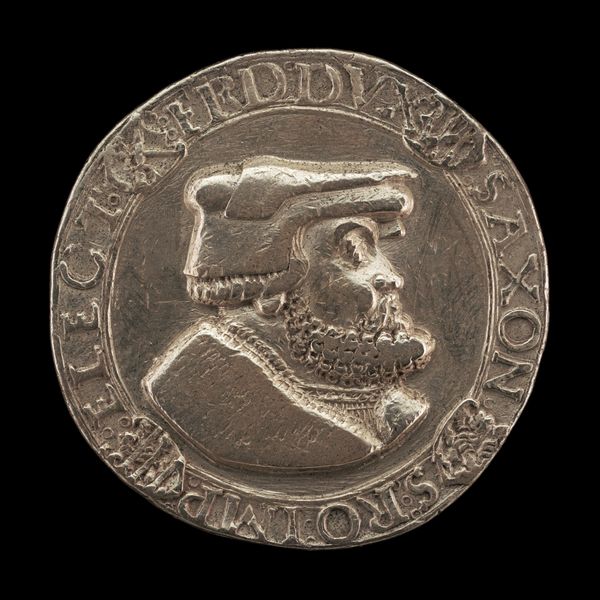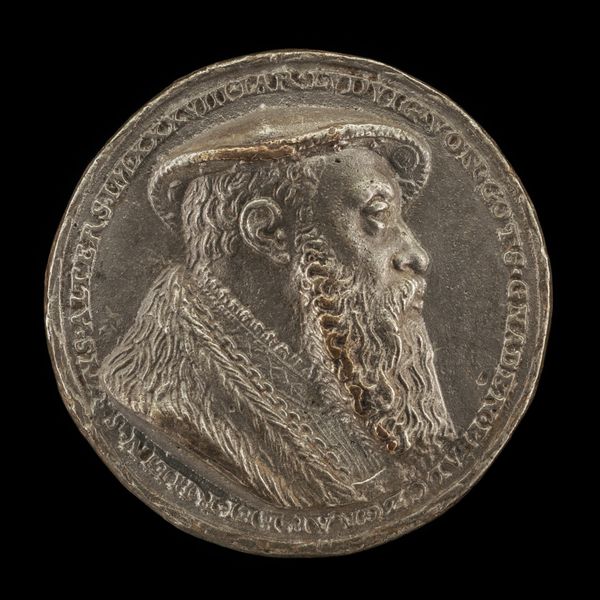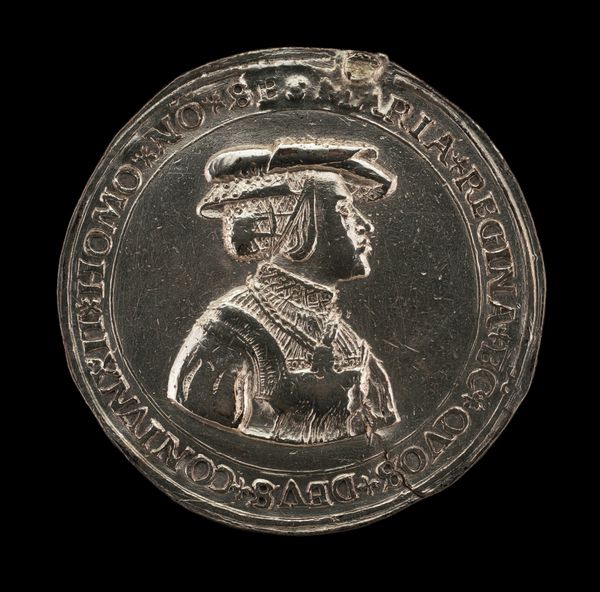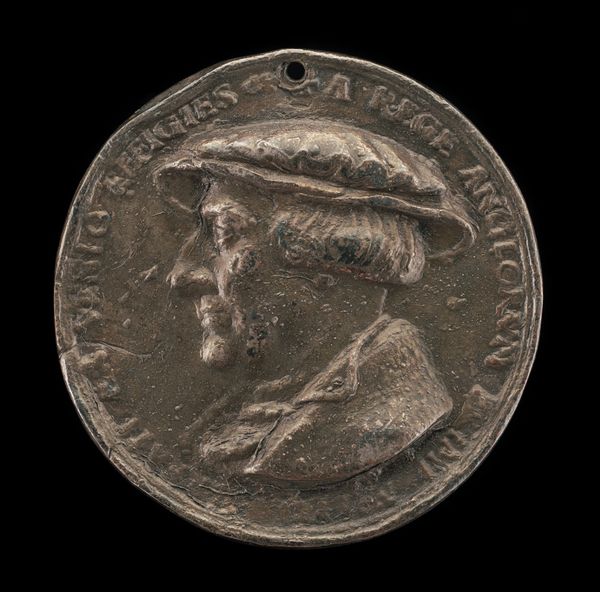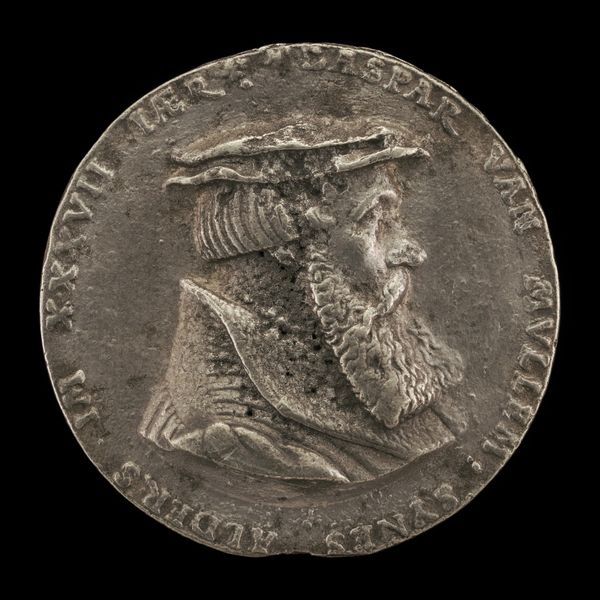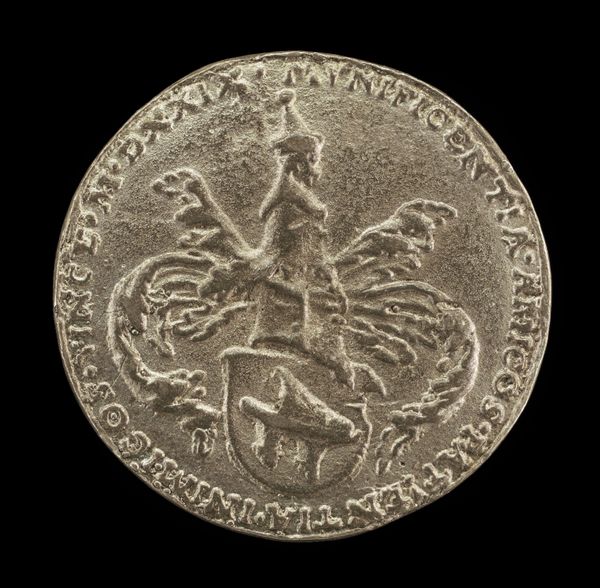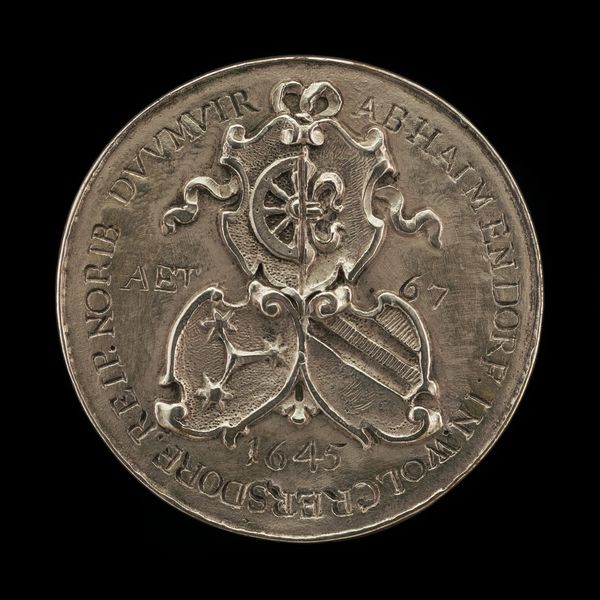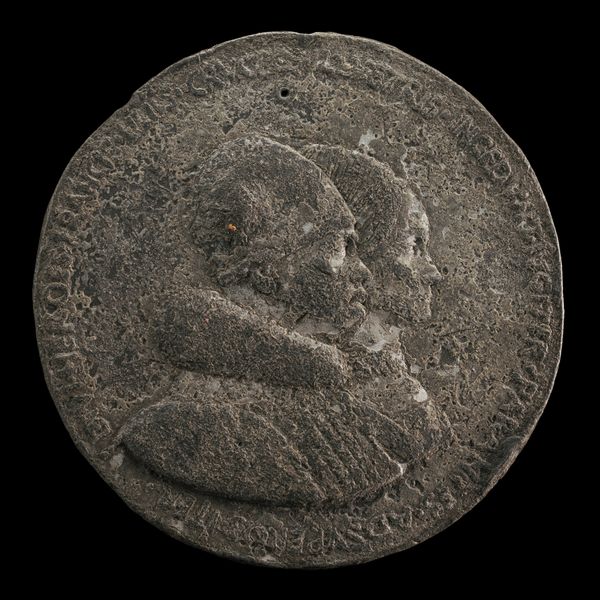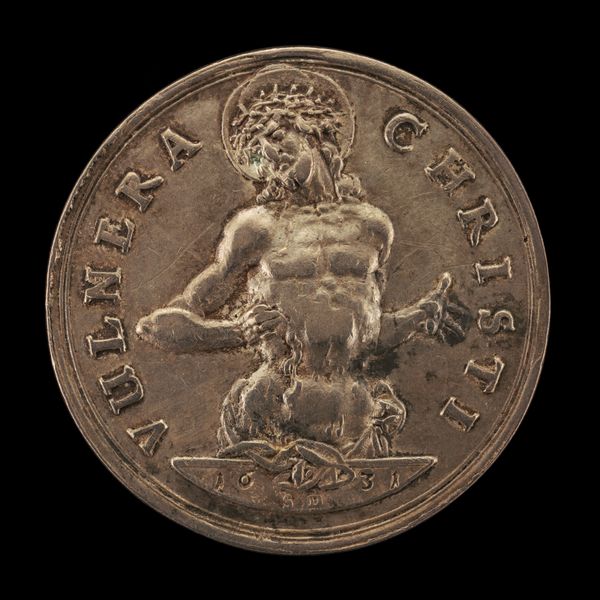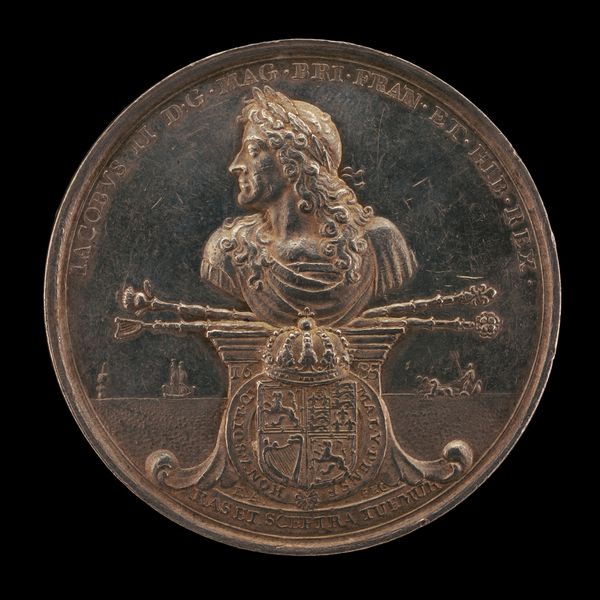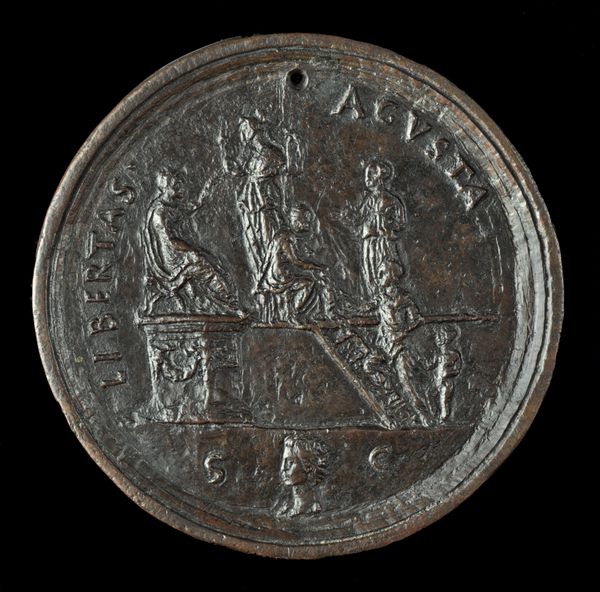![Louis II, 1506-1526, King of Hungary and Bohemia 1516 [obverse] by Anonymous](/_next/image?url=https%3A%2F%2Fd2w8kbdekdi1gv.cloudfront.net%2FeyJidWNrZXQiOiAiYXJ0ZXJhLWltYWdlcy1idWNrZXQiLCAia2V5IjogImFydHdvcmtzLzE2ZTkzMTEzLWFjOGQtNGFmOC05MzEwLWY4OGQyOGUwYjA4Yy8xNmU5MzExMy1hYzhkLTRhZjgtOTMxMC1mODhkMjhlMGIwOGNfZnVsbC5qcGciLCAiZWRpdHMiOiB7InJlc2l6ZSI6IHsid2lkdGgiOiAxOTIwLCAiaGVpZ2h0IjogMTkyMCwgImZpdCI6ICJpbnNpZGUifX19&w=3840&q=75)
Louis II, 1506-1526, King of Hungary and Bohemia 1516 [obverse] 1526
0:00
0:00
metal, sculpture
#
portrait
#
medal
#
metal
#
sculpture
#
11_renaissance
#
sculpture
#
italian-renaissance
Dimensions: overall (diameter): 4.18 cm (1 5/8 in.) gross weight: 14.4 gr (0.032 lb.) axis: 12:00
Copyright: National Gallery of Art: CC0 1.0
Curator: This medal, made around 1526, depicts Louis II, King of Hungary and Bohemia. The portrait is in profile and encircled by Latin text. Editor: The silvery metal has an austerity that suggests both regality and distance. The sharp profile, the precise lettering, all feel quite controlled, almost…clinical? Curator: Renaissance medals like this one were often commissioned to commemorate individuals and events, functioning as both art object and propaganda. This was a way to cement their place in history. Consider the specific claim to power this medal performs given the political context. Louis II’s reign occurred during increased conflict with the Ottoman Empire. He died in battle shortly after this medal was made, fighting against them. Editor: Absolutely, it's not just a portrait, it’s a construction of power. I'm struck by the figure's youthful appearance; given his age when he died, around 20, that almost becomes a lament. A tragic symbol. And his costume - I note how different a picture of strength is given through Renaissance costuming when so many young artists are only captured unclothed. How might that costuming impact notions of identity today? Curator: The imagery plays a key role in conveying power through fashionable clothing that reflected his status, though the classical influences of Renaissance art can’t be overlooked here. The choice to emulate classical portraiture was strategic, linking him to a lineage of powerful rulers. Furthermore, these medals were circulated, sometimes given as gifts. That action served to reinforce the king’s image, even in the periphery of his kingdom, impacting broader power structures. Editor: I suppose one can also consider the symbolism beyond the portrait itself – the use of metal itself implies permanence and value, right? As well as how the mode of representing Louis II's life is deeply entwined with the cultural and political narratives of the era. I mean, it makes you consider our own methods of documentation and self-representation… will future generations view *us* with such formality and reserve? Curator: Interesting thought! And while digital mediums change, these medals continue to speak across centuries.
Comments
No comments
Be the first to comment and join the conversation on the ultimate creative platform.
